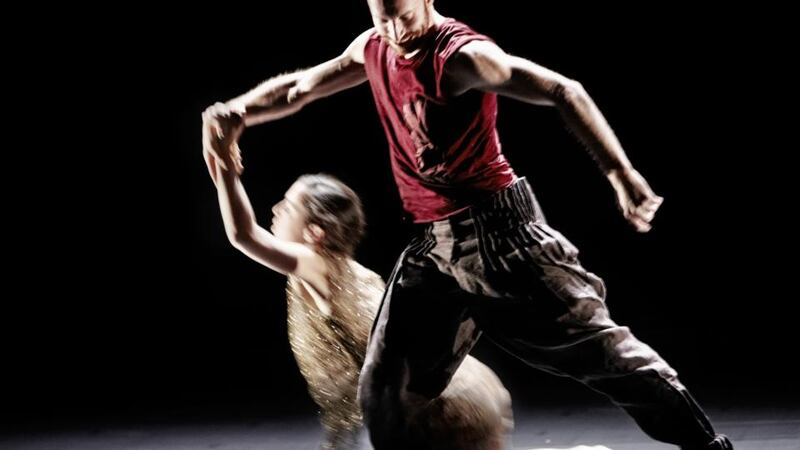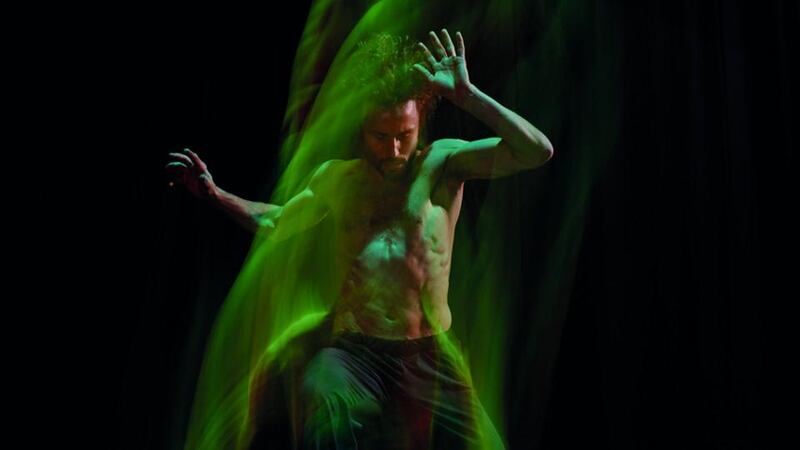El Pliegue/Bruit de Couloir
***/**
Name of the Next Song


****
Still Current
****
A flamenco dancer and a juggler seem an odd combination, but artistic similarites emerge watching Sònia Sánchez and Clément Dazin in a double bill within the confined space of Project’s Cube. Both have taken their traditional practice along another path by introducing elements of contemporary dance.
Flamenco dancer Sánchez has gained experience in body weather – movement training that investigates the intersection of bodies and their environment. According to its principles, bodies are constantly changing like the weather, and should be open to the shifting influence of the environment. The movement in El Pliegue (The Fold) shows this deep physicality, and the impulse for each movement seems primal. For most of the performance, Sánchez is hunched over, rather than adopting the haughty upright posture traditional to flamenco. Her hard-shoe taps range from rapid light staccato to the thud of heels slammed on the floor. The mix of body weather and flamenco is intriguing, but although the deconstructed flamenco vocabulary contains moments of breathtaking force and virtuosity, the overall work feels disjointed.
Bruit de Couloir is less successful. Ostensibly about the phenomenon of near-death experience, Dazin's juggling doesn't slipstream into contemporary dance and hip-hop as promised. Beginning with a walk down a tunnel of light, the subsequent flashback to different stages of life isn't realised, and it feels like a narrative that is imposed on the juggling sequences. Ultimately, it is left to Dazin's not-quite-perfect juggling skills to sustain the performance.
Andersson’s surprises
There is no such lack of theatrical guile in Örjan Andersson's Name of the Next Song. Instead of the fashionable look of stripped-back stage, Project's Space Upstairs is kitted out with a black-drape proscenium and wings. The extra plushness is well chosen, and is evidence of the choreographer's aesthetic clarity in a work that harnesse
s strong collaborations in BJ Nilsen’s composition and Udo Haberland’s design. Andersson is constantly playing with the audience’s expectations, particularly with time, and spurns any predictable sense of form in constructing the sequences of solos, duets, trios and quartets. Each dancer is in search of their own inner rhythm and movements are given full space and time to be explored.
Nilsen's soundscore – mixed live – draws on everyday sounds from nature that are manipulated electronically, producing an audio backdrop that has a common universality, while Haberland's lights give the proceedings a hushed glaze with soft natural light. Overall, Name of the Next Song is a softly spoken call to rediscover personal equilibrium by rejecting contemporary pressures for speed and productivity.
Maliphant’s well-lit moves
Russell Maliphant has an equally fluent collaborator – lighting designer Michael Hulls – in his evening of works at the Abbey Theatre. The pair have built a repertoire over the past 17 years, bringing together ideas of light and how it gives definition to the body and stage.
Whereas most lighting designers are concerned with lighting the performers when the dance is complete, Hulls works as a co-creator and helps shape the choreography, often by creating structured patterns of light on the floor. Now Hulls and Maliphant are using animated projection (created by Jan Urbanowski) and this has intensified this relationship between movement and light.
Not only can the downward projections create textures on moving bodies, but they also create boxes of light that change texture and position onstage. Rather than flood the stage with light, Hulls prefers crepuscular gloom, which makes the performance less presentational and draws the audience into the action.
This is most evident in Still Current (2013), a duet between Maliphant and Carys Staton that revolves around separation and co-existence. Rectangular projections on the ground look like blue parchment paper that expand to fill the stage, then contract to a small rectangle or move from centre stage to the edges. At the start, the two dancers are captured in bursts of light that last a few seconds, just enough time for a short duet, before changing position again in the darkness. It offers quick snapshots of their relationship, the movement illustrating support, equilibrium and comfortable grace. Towards they end their slowly unravelling duet has separated them into two islands of light that eventually coalesce, as do the dancers.
Afterlight (Part One) from 2009, is inspired by Nijinsky, and is a fascinating, beautifully realised study in vulnerability and confidence. Again the projection opens out to provide a cloud-like floor, but most of the time it is a tightly focused space for Thomasin Gülgeç. As in all of Maliphant's choreography, the movement is gorgeously lush, full of slowly swirling arms, arched backs and extended legs that trace huge arcs in the air. Satie's plaintive piano music helps to add poignancy and barely perceptible fragility to the dancing.
Another solo, Two (2001), is probably Maliphant's most popular work, with past interpreters including Sylvie Guillem and Carlos Acosta. Staton's performance is completely absorbing, and she fully indulges in the repeating balletic movement phrases. The trio Traces, performed in softly focused pools of light and featuring martial-arts-like sequences with sticks, is the least satisfying work, with what feels like a rushed ending. But the thundering opener, Still, performed by Dickson Mbi, is a tour de force. It is marvellously performed, has identifiable traces of languid ballet and sharp popping, and is skilfully constructed so that there is clarity and purpose behind every movement.












